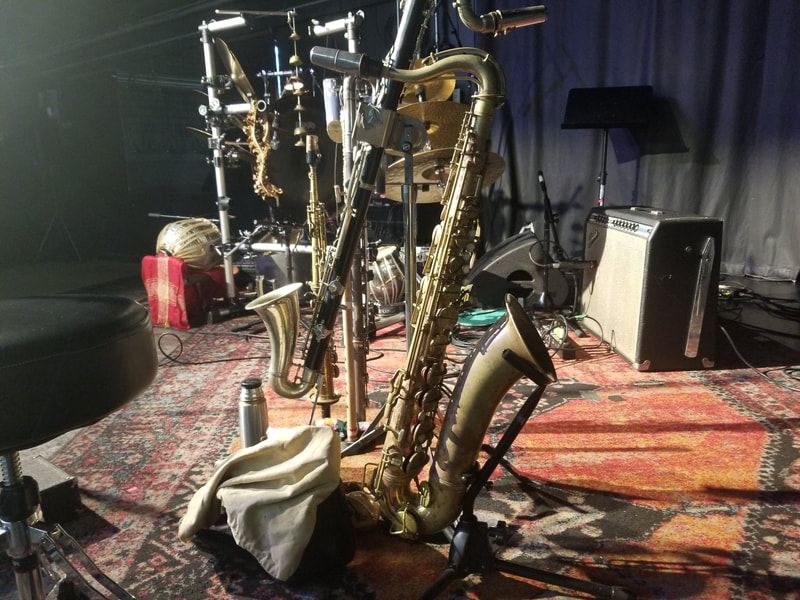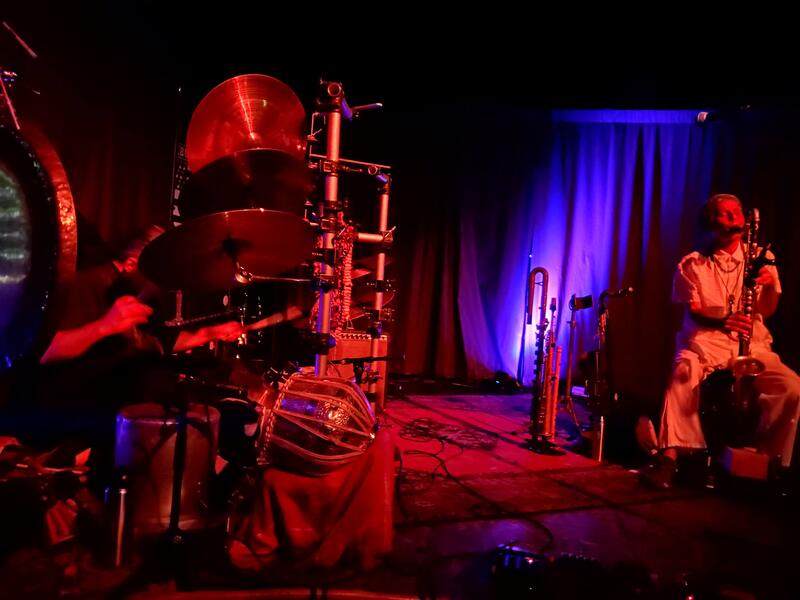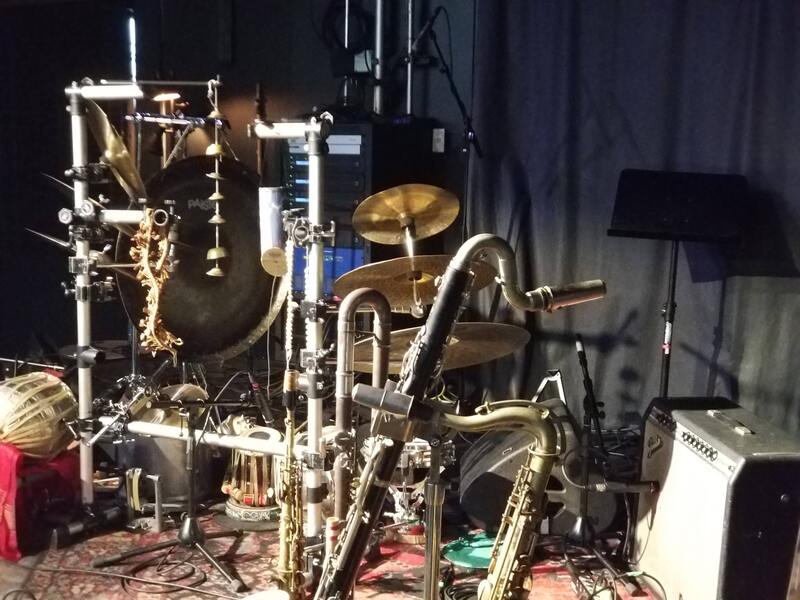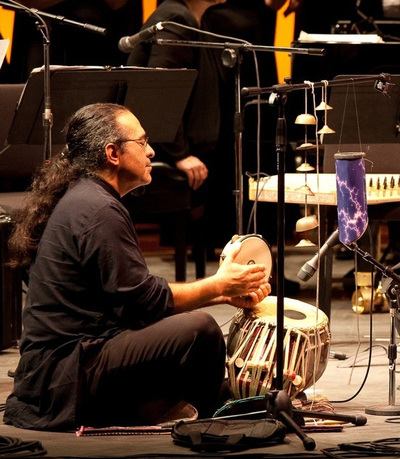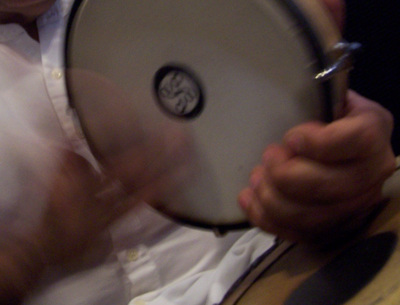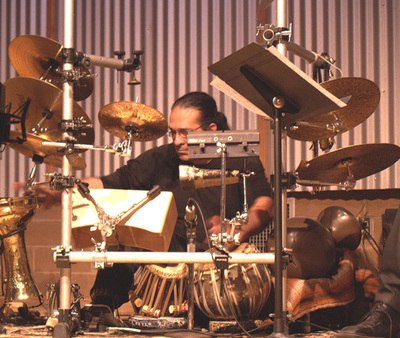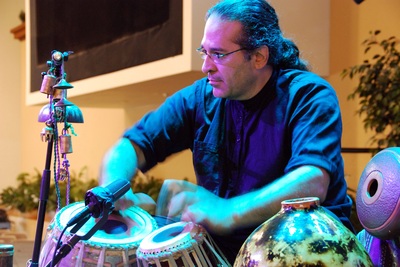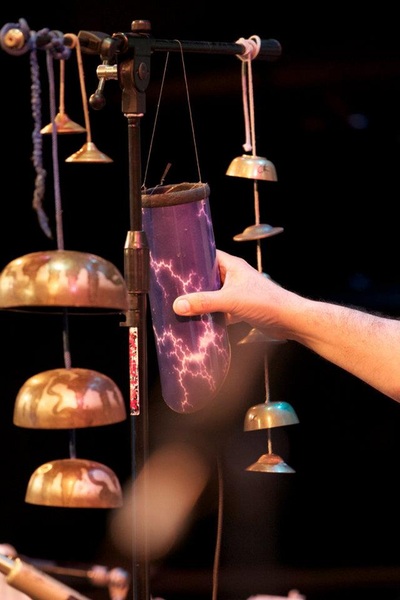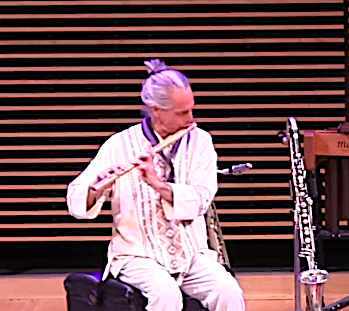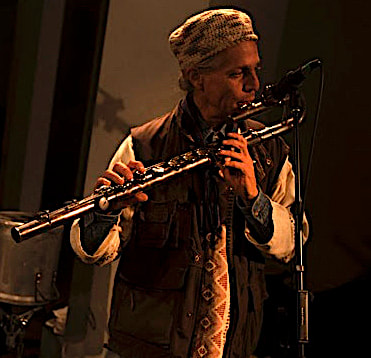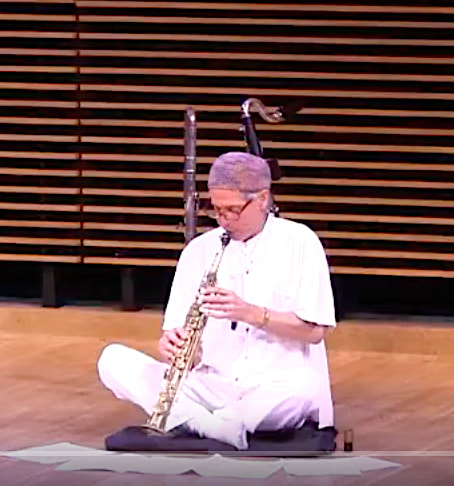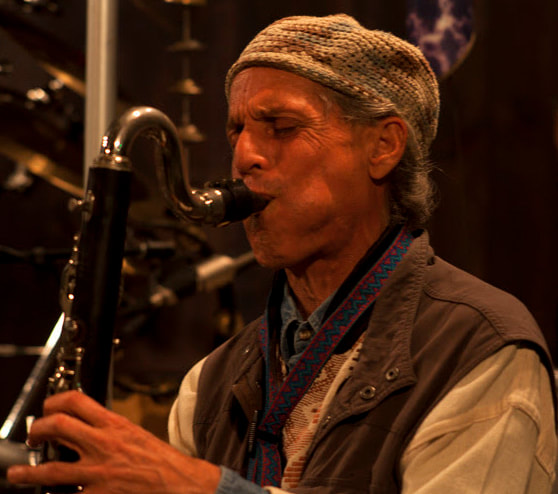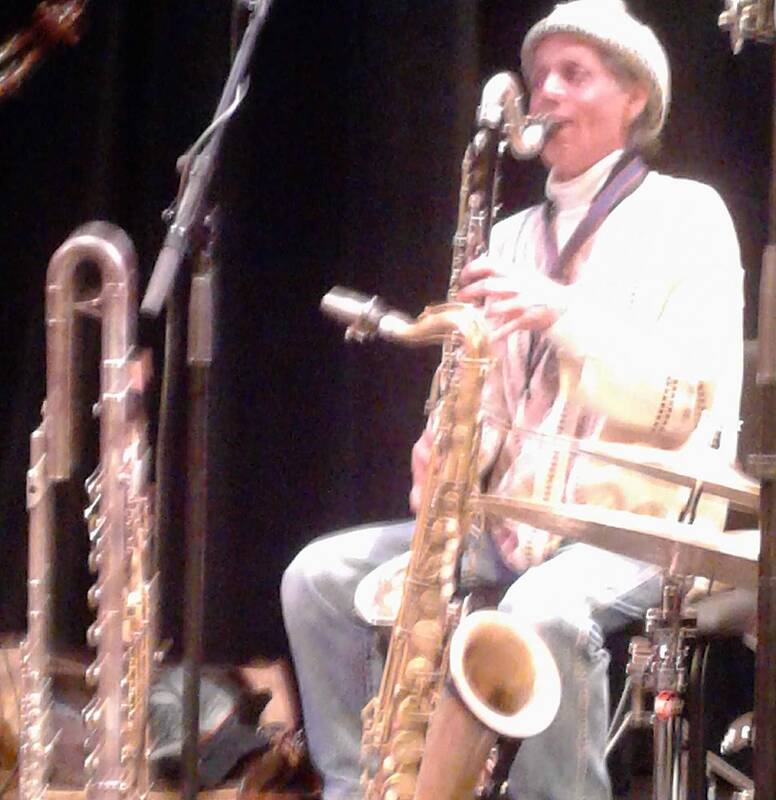INSTRUMENTS
CHRISTOIPHER GARCIA
NORTH INDIAN TABLA
SOUTH INDIAN KANJIRA
SOUTH INDIAN CHATAM
OLLA (MEXICAN COOKING POT
(BAA WEHAI ) YAQUI WATER DRUMS
PAISTE CYMBALS AND GONGS
The Tabla is the most common and popular drum used in North Indian
music today. It consists of a pair of drums - the right drum is known as
the tabla and the left drum is called the bayan (though both are known
collectively as Tabla)
The Tabla is made of wood and has a "head" made of stretched
animal skin, traditionally a goat skin. The skin is stretched by leather
straps that run down the side of the drum over cylindrical blocks of wood
which are used to tune the head. Finer tuning is done by striking the rim
of the tabla with a small tuning hammer.
The tabla is usually tuned to the tonic (Sa), Dominant (Pa), or the Sub-Dominant (Ma).
The bayan is isually made of metal, originally ceramic, also with
a stretched goat skin head. Both drums have a black spot in the center made
of manganese or iron dust (called Syahi).
Christopher plays the same tabla he has played on since 1979 with some
minor changes. His tuning straps are made of nylon instead of the traditional
leather, due to the dry southern California climate, which normally dries out leather.
A change recommended by his first tabla teacher Pandit Tarnath Rao, and his tuning
pegs are cut from a Mexican walking cane instead of the traditional dowel.
NORTH INDIAN TABLA
SOUTH INDIAN KANJIRA
SOUTH INDIAN CHATAM
OLLA (MEXICAN COOKING POT
(BAA WEHAI ) YAQUI WATER DRUMS
PAISTE CYMBALS AND GONGS
The Tabla is the most common and popular drum used in North Indian
music today. It consists of a pair of drums - the right drum is known as
the tabla and the left drum is called the bayan (though both are known
collectively as Tabla)
The Tabla is made of wood and has a "head" made of stretched
animal skin, traditionally a goat skin. The skin is stretched by leather
straps that run down the side of the drum over cylindrical blocks of wood
which are used to tune the head. Finer tuning is done by striking the rim
of the tabla with a small tuning hammer.
The tabla is usually tuned to the tonic (Sa), Dominant (Pa), or the Sub-Dominant (Ma).
The bayan is isually made of metal, originally ceramic, also with
a stretched goat skin head. Both drums have a black spot in the center made
of manganese or iron dust (called Syahi).
Christopher plays the same tabla he has played on since 1979 with some
minor changes. His tuning straps are made of nylon instead of the traditional
leather, due to the dry southern California climate, which normally dries out leather.
A change recommended by his first tabla teacher Pandit Tarnath Rao, and his tuning
pegs are cut from a Mexican walking cane instead of the traditional dowel.
PABLO CALOGERO
BANSURI
BASS CLARINET
BASS FLUTE
SOPRANO SAXOPHONE
TENOR SAXOPHONE
BANSURI
BASS CLARINET
BASS FLUTE
SOPRANO SAXOPHONE
TENOR SAXOPHONE
